DUCK'S GREEN DRAKE
Several years ago, I experimented with ways to tie an extended body mayfly with tails incorporated in the extended body, which was comprised of antron. A couple different versions caught fish, but each had shortcomings.
Recently, I ran across a furled body nymph on the FAOL Bulletin Board posted some time ago by BB member ducksterman, which used a product called Stretch Magic in the extended body. It dawned on me that that material might enhance the furled extended body, and the timing was good since I was planning for a green drake hatch on a Northern Idaho crick.
This fly has now been fished numerous times on the green drake hatch for which it was tied. The crick presents a great variety of water that tests the fly's appeal and floatation in everything from virtually still water to fast riffles to pockets to deep pools with moderate currents. It has appealed to the population of Westslope cutthroat trout wherever fished.
A couple of the techniques critical to tying this fly are directly attributable to ducksterman. I might have stumbled across these techniques without him in the background, and maybe not. So I named the fly for him, in appreciation for his contributions to the creation of this fly and to the FAOL Bulletin Board.

Materials:
- Hook size: 14 Dai-Riki 125 or comparable 2X short dry fly hook
- Thread: Uni 8/0 olive dun
- Extended body: olive green antron yarn and clear .5mm Stretch Magic
- Tails: moose body hair
- Dubbing: superfine BWO
- Post: light gray antron yarn
- Hackle: size 12 grizzly hackle
Wrap thread base to bend.
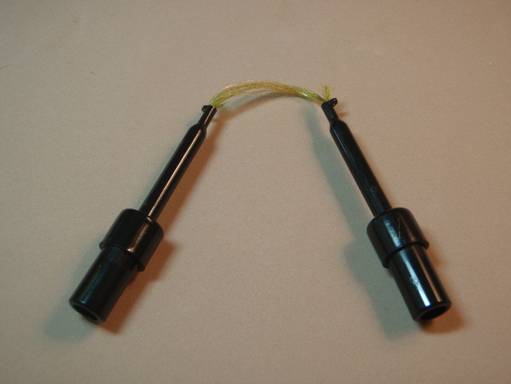
Form extended body with incorporated tails. This is a multiple step process. First, place each end of one strand of antron and one strand of clear Stretch Magic in electrician's clips.
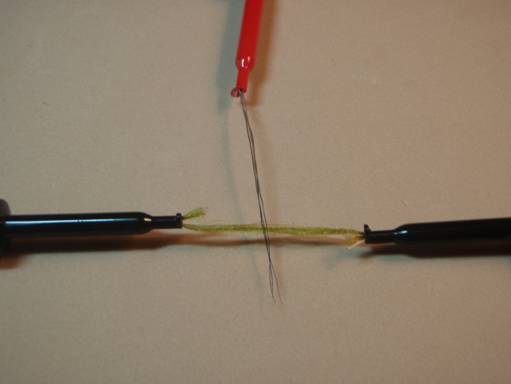
Cut, stack, and trim butts of three moose body hairs and put butts in an electrician's clip with tips even.
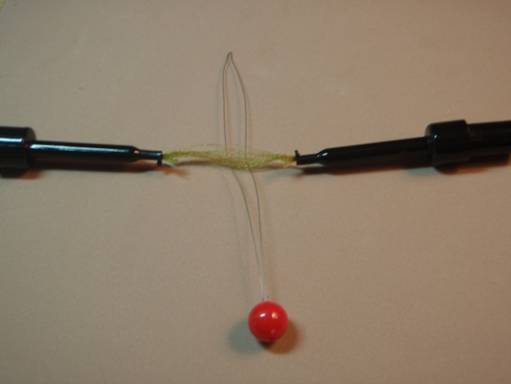
Insert a bobbin threader through the antron strand, spitting it as evenly as possible.
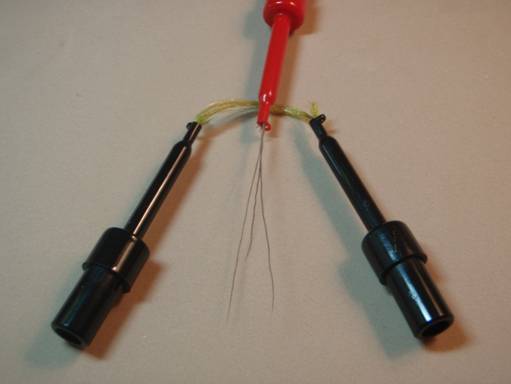
Run the tips of the tails (moose body hairs ) through the bobbin threader almost to the clip. Pull the loose ends of the tails through the antron strand. Move the tails as close to the center of the strand as possible, and adjust the length.
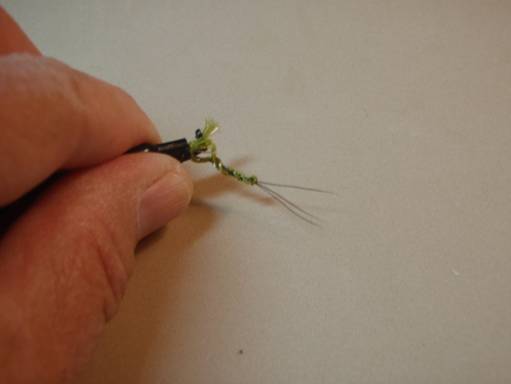
Twist the two electrician's clips holding the antron / Stretch Magic in opposite directions, under good tension, until they want to twist back on themselves. The tighter the twist, the stronger the extended body and the more easily the tails will incorporate. I usually twist about eleven times.
Holding both clips in one hand, with adequate tension, grasp the twisted strands at the point where the tails protrude. With the clip holding the tails positioned below the twisted strands, ease tension on the clips, letting the strands furl around the tailing material. As this process takes place, it helps to manually twist the combined material in the direction it wants to furl. The FEB with incorporated tails should look like this.
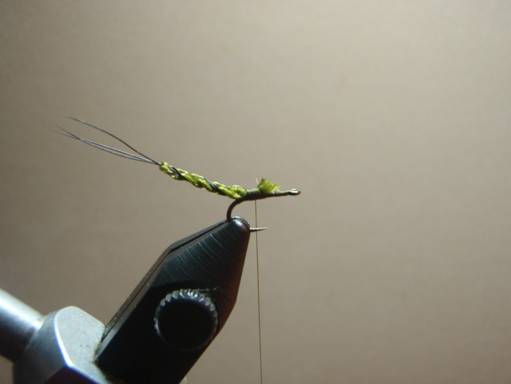
Positioning the FEB so the tails are in the most desirable position, mount the FEB on the hook at the end of the shank and secure it with an appropriate number of thread wraps. Building a thread dam between the top of the hook and the bottom of the FEB helps prop it up.
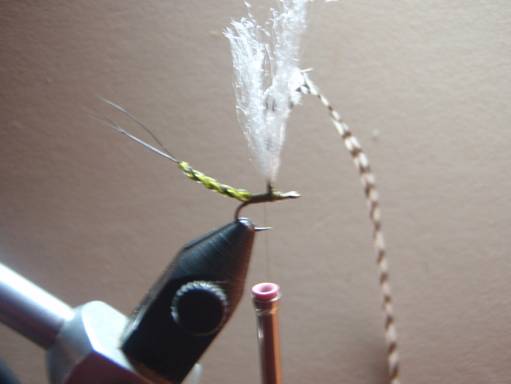
Position, tie in, and post the antron for the parachute post. Tie in the hackle, binding it to the post high enough to allow for six or more turns of hackle.
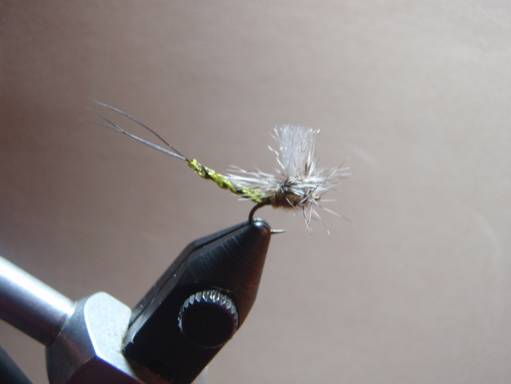
Dub the thorax area from the FEB tie in point to just behind the eye.
Wrap the hackle down the post counterclockwise six turns. Then, instead of tying off the hackle, wrap it forward three turns around the shank to just behind the eye of the hook.
Tie off the hackle, finish with a couple half hitches, and trim the hackle below the hook flush with the bottom of the thorax.
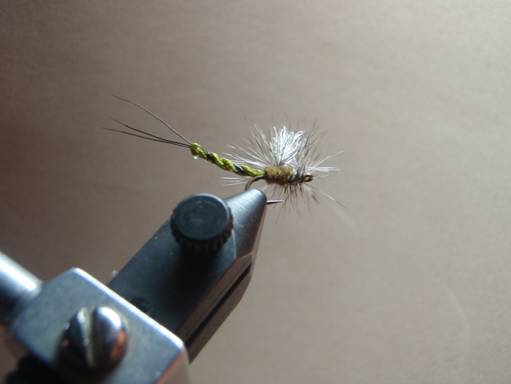
This may not appear to be a simple fly to tie. But once you get the steps down, it really is easy to tie. And it is durable, floats well, and has been very effective.
For more great info, check out:
Beginning Fly Tying | Intermediate Fly Tying | Advanced Fly Tying.
